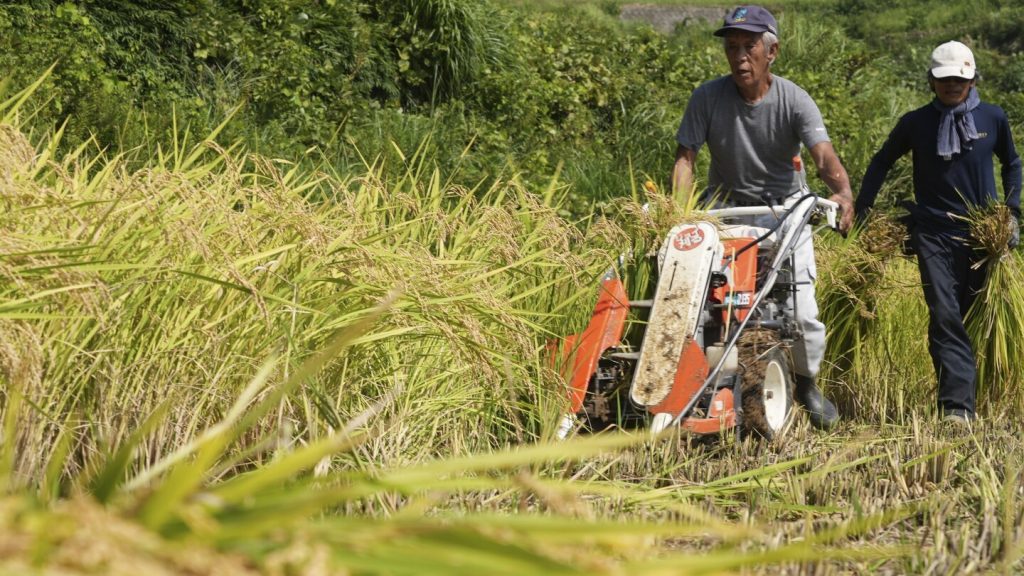In the remote village of Kamimomi in Japan’s Okayama prefecture, rice farmers are experiencing the impacts of climate change on their harvest. With temperatures rising, last year’s heat wave caused a decrease in the quality and quantity of rice produced. This year, Japan recorded its hottest July on record, signaling further challenges for farmers. The global rise in temperature since preindustrial times has led scientists to call for measures to cap warming at 1.5 degrees Celsius to avoid the worst effects of climate change.
The poor rice harvest in Japan from last year has led to a nationwide shortage this year. Ministry data shows a decrease in the country’s private sector rice inventory, resulting in empty shelves in supermarkets and purchase limits being enforced. Rising temperatures not only affect the growth cycle and yield of rice but also impact the quality of the grain. As temperatures rise, the starch buildup inside rice grains is reduced, causing the crop to appear chalky and reducing its value. At least a fifth of rice farms have reported a drop in quality due to rising temperatures.
To combat the effects of climate change on rice production, the government is promoting the adoption of heat-resistant rice variants such as Sai no Kizuna. Developed to withstand heat, this strain has shown promising results even in extremely hot conditions. Research organizations worldwide are working on developing more resilient strains of essential food like rice and introducing heat and drought-resistant grains like sorghum or millet. However, it can take up to 10 years to develop a new variant, and there is a challenge in convincing farmers to switch to these new varieties.
The average age of agricultural workers in Japan is nearly 69, making them vulnerable to heatstroke, especially during the hottest months. In Kamimomi, a community project aims to revive abandoned paddy fields due to the aging population. With no successors in sight, farmers worry about the future of rice farming in the region. The project involves dividing labor among farmers, but the tough work and extreme weather conditions present challenges. The strain Sai no Kizuna, developed to be heat resistant, is seen as a potential solution to combat the effects of rising temperatures on rice production.
As temperatures continue to rise and climate change impacts agriculture, researchers are focused on developing more resilient strains of rice. Variants tolerant of temperatures up to 3 degrees Celsius higher are being proposed for introduction across Japan by the 2040s. The strain Sai no Kizuna, developed in 2012, stands up against heat, typhoon winds, and certain pests and diseases. However, convincing farmers to switch to new strains and adopt heat-resistant variants remains a challenge. With only a small percentage of Japanese paddy fields currently using heat-resistant variants, there is a need for widespread adoption to ensure the sustainability of rice farming in the face of climate change.


